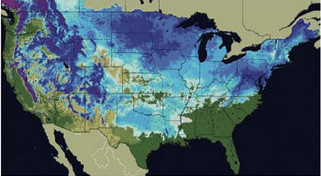
Massive rogue waves struck the cruise ship Louis Majesty in the Mediterranean on Wednesday killing two and injuring more than a dozen passengers. The waves, at least 25 feet in height, broke windows and flooded cabins on the ship carrying 2,000 people.
The Louis Majesty was traveling from Barcelona to Genoa on the last day of a 10-day cruise of the western Mediterranean when the waves struck. Reports indicate that three massive waves broke windshields on the front of the ship and sent water over the decks.
Two deaths were reported as a result of the waves and both died at the scene. The victims were a 52-year-old Italian man and a 69-year-old German man from North Rhine Westphalia.
Fourteen injuries were reported, most minor and none life-threatening. Two of those had serious injuries including a 62-year-old woman who broke both of her legs.
Passenger Claude Cremex of Marseille, France told the Associated Press, “It was spectacular. A lot of water came in. Many cabins were flooded.”
- Slideshow: Monstrous rogue waves kill two on cruise ship
- Don’t miss: Raw video: Mediterranean cruise ship hit by wave
Exactly where the accident occurred was still unclear. Most reports said the ship was sailing near the French Mediterranean port of Marseille but others placed it off the coast of Cabo de San Sebastian, Spain near Palafrugell.
Reports are that there were high winds in the area the ship was traveling through and automated buoy data indicates significant wave action at the time. A buoy operated by Meteo France in the area recorded waves to 21 feet high and winds in excess of 40 mph.
The 680 foot ship is owned and operated by Louis Cruises and had 1,350 passengers and 580 crew members on board at the time of the accident. The nearly 41,000 ton ship is “the most stylish and biggest ship in the fleet” according to Louis Cruises.






